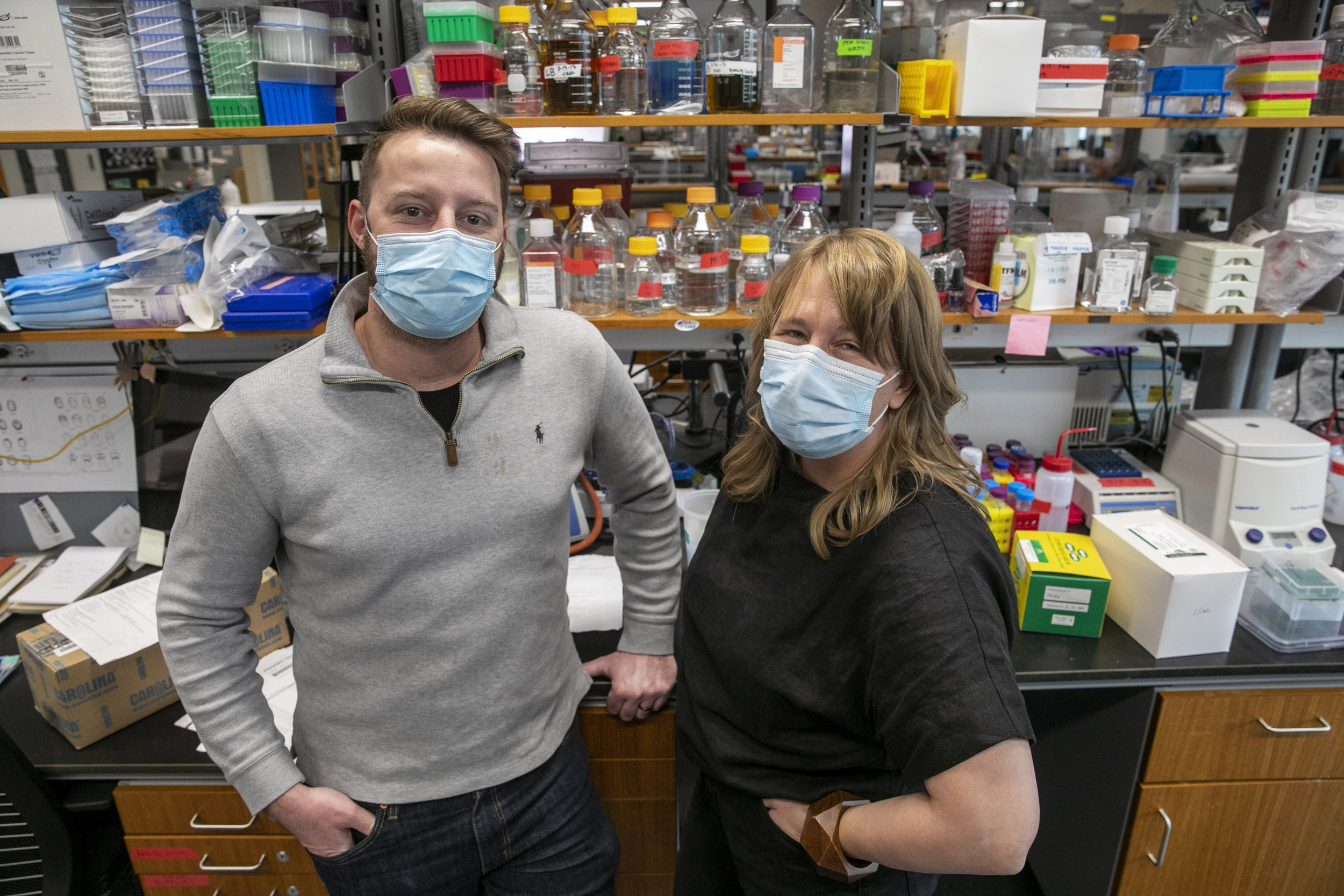Seeing squid more clearly

iStock by Getty Images
Harvard researchers show how animals repurpose genes to develop both limbs, eyes
The last common ancestor of cephalopods and vertebrates existed more than 500 million years ago. In fact, a squid is more closely related to a clam than it is a to a person. Even so, the two lineages independently evolved camera-lens-style eyes with very similar features: a single lens in the front and a cup-shaped, image-sensing retina in the back.
The similarity has had scientists wondering for decades how squid and their cousins get their eyes. In research published this week in BMC Biology, a Harvard lab moves closer to unraveling the mystery.
The researchers from the FAS Center for Systems Biology discovered a network of genes important in squid eye development that are known to also play a crucial role in limb development across animals, including vertebrates and insects. The scientists say these genes have been repurposed in squid to make camera-lens-type eyes.
The results could help researchers understand how these genes and the cellular pathways they are known to work on truly function in both cephalopods and vertebrates. They also provide an innovative example of how different animal lineages can skillfully hijack the genetic tools in their arsenal and adapt them to accomplish surprising evolutionary feats.
“This was pretty shocking because very few people think that an eye lens is very much like a leg,” said Kristen Koenig, a John Harvard Distinguished Science Fellow and senior author of the study. “One of the big questions in biology is how do you make novel [morphological features]. The squid lens is a novelty to their lineage. They had to make a lens from scratch to be able to see really well. What this work implies is that you have to take the tools that you have and use them for new purposes.”

“The squid lens is a novelty to their lineage. They had to make a lens from scratch to be able to see really well,” said Kristen Koenig (right), senior author of the study. Koenig with postdoc fellow Kyle J. McCulloch.
Jon Chase/Harvard Staff Photographer
The scientists from the Koenig lab theorize that the network of genes they discovered in squid may not be important for creating specific organs, but they may be doing something more generic that is useful for certain developmental functions, including both limb and lens development. These other developmental functions could include precise gene expression that places the right types, numbers, and shapes of cells in the right place at the right time. Limbs and eye lenses, for instance, start out as a flat sheet of cells that becomes patterned into concentric circles, a bullseye-like design, and develops from there to their final forms.
“Our finding breaks down the idea that the network evolved solely for ‘limb outgrowth’ function, but rather serves a broader function for any sort of patterning requiring this concentric-circle-like motif, including limbs, lens, tooth growth, and potentially others we have yet to identify,” said Kyle J. McCulloch, a postdoctoral fellow in the Koenig lab and lead author on the study.
Researchers got a better idea of the role these genes play in squid eye development by manipulating a cellular path called the WNT signaling pathway. In fruit flies, it is the pathway known for igniting the genes that lead to limb development.
The researchers wondered how a group of genes important for leg development made the eye lens and what the WNT signaling pathway was doing in lens development. They ran the experiment on squid embryos and found that over-activating this pathway resulted in loss of the eye lens. This is what led the scientists to believe that differences in how WNT signaling acts on these genes may be important for how the squid controls gene expression in the limb versus the lens.
The lab plans to keep studying these genes and compare their function in lens development to their function in the development of other morphological features.
“Ultimately this work shows the power of studying diverse systems,” Koenig said. “It’s surprising that genes that we have studied so well in other model systems like fruit flies and vertebrates, and that we thought we understood their function together was to make legs, are used for this totally different organ in the squid. It changes how we think about what these canonical genes do in development. By looking across the diversity of life, we actually might understand what these genes are doing more accurately.”
This work was funded by the National Institutes of Health and the John Harvard Distinguished Science Fellowship.





